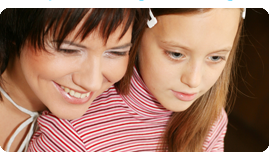Our Philosophy and Mission
The Whole Self Center’s philosophy suggests that every human being is more than a body with a brain. When caring for a child – a whole person - we are experiencing the creative spirit present in that child & in ourselves.
- As we remain interested in exploring creative possibilities for the individual in the moment, we are more open to experiencing something new, such as developing a valuable skill we never knew or thought was possible.
- In this way, we are less likely to stay stuck in repeating our old, inhibiting habits & behaviors.
- By living this understanding with individuals with autism, we continue to become better able to respect & support children for who they already are, deserving of love & attention simply for being.
